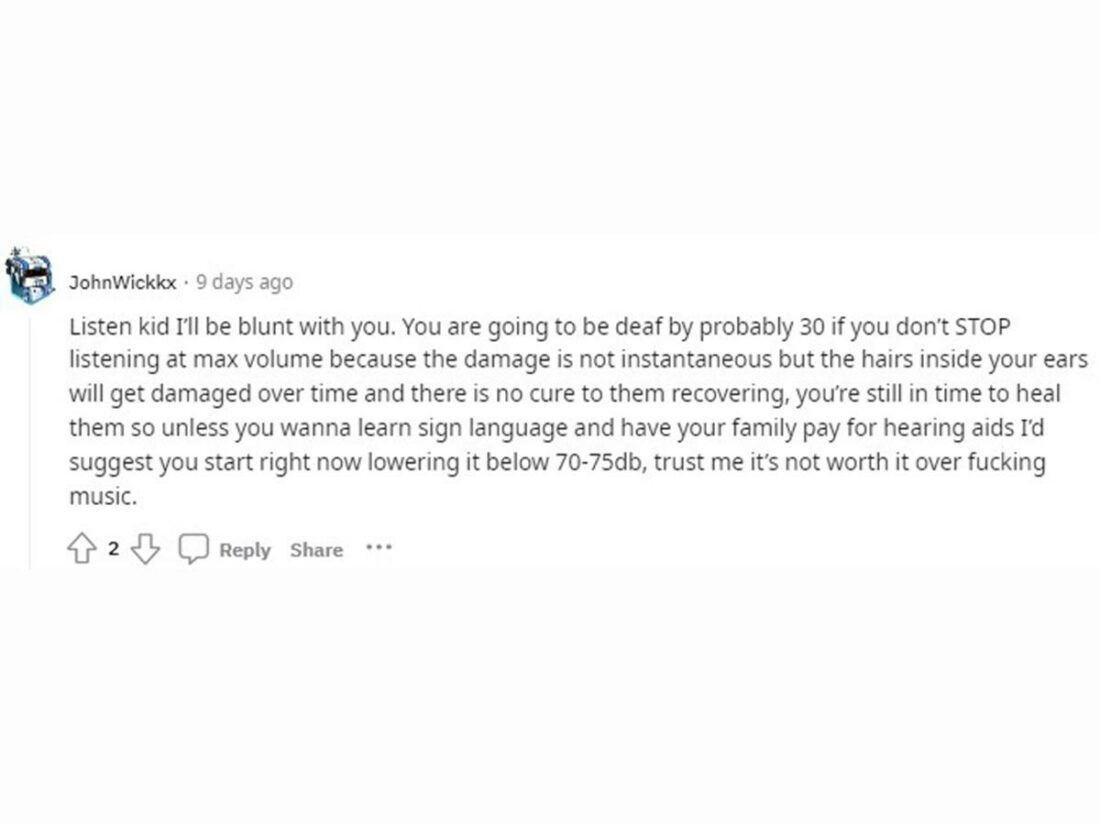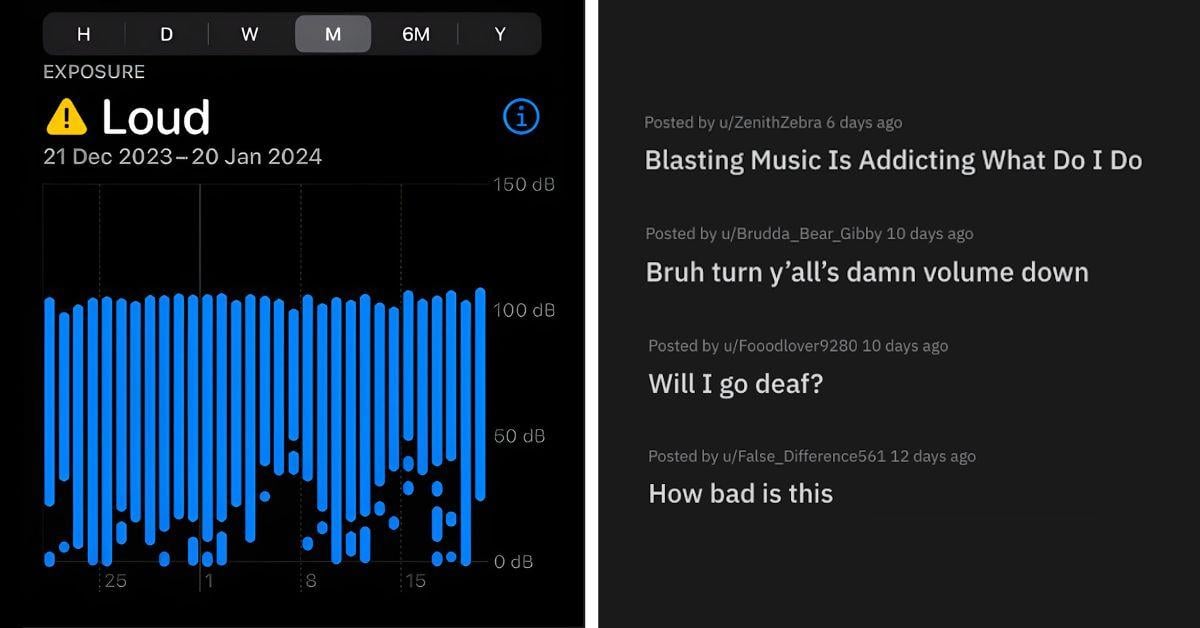Most of them go beyond 100 dB for days on end.
A few Redditors have created a buzz by posting their Health app noise exposure results on the r/AirpodsPro subreddit. The trend reveals that more and more users, especially the younger age bracket, listen to music at volumes exceeding the safe level of 70 dB. This highlights a widespread issue of dangerous listening practices.
The Reddit Noise Exposure Trend
Those flagged with ‘’Loud’’ warnings prompted mixed reactions. Some were concerned over the adverse long-term effects, while a few had a more relaxed attitude toward potential hearing damage, jokingly asking, ‘’Will I go deaf?’’
Others with ‘’OK’’ statuses expressed wonder at how anyone can stand listening to anything louder volumes.

Alarmingly, some individuals, especially teens and young adults, report their headphone audio levels hitting 100 dB. According to them, this is due to high ambient noise in places like public transportation, schools, or noisy homes, wherein noise cancellation isn’t as effective.

Redditor u/ZenithZebra explained that they ‘’tried doing the limit audio, but the hallways and sh*t are mad loud at school even with noise cancellation, so I blast.’’
Another user agreed, replying to a critical comment, saying, ‘’I think you underestimate the enormous sound three thousand teenagers all crammed in a single hallway can make.’’
Many commenters seemed to agree that noisy environments, in general, are to blame:
Such conditions force many to raise their listening volume to counteract their loud surroundings, thus risking their hearing health.
The Dangers of High Audio Levels
Safe listening levels are typically under 70 dB for prolonged exposure. However, the risk escalates when levels exceed 85 dB for extended periods. And, it gets even worse as higher dB exposure decreases the number of minutes you can get exposed to them to prevent damage.
For example, listening to 95 dB will result in damage if you get exposed for more than 50 minutes. Listening to 100 dB, on the other hand, shortens the exposure time limit to 15 minutes.
This makes the trend results concerning as a lot of the posts that users go beyond 100 dB daily.

Unfortunately, prolonged exposure to high volumes can lead to irreversible noise-induced hearing loss (NIHL).
This permanent condition is caused by damaged hair cells in the inner ear, reducing hearing ability. Tinnitus, or ringing in the ears, is another irreversible consequence of excessive noise exposure.
To check your noise exposure using iOS, follow these steps:

- Open your iPhone’s Health App.
- On the bottom-right corner, tap Browse > Hearing > Headphone Audio Levels. Here, you can see a graph showing your audio levels and the number of hours you’ve been exposed to your average dB.
- Click Show More Data to see more insights like daily average, range, etc.
Other Factors Contributing to Unsafe Listening Habits
This growing trend of people listening at high volumes may be driven by factors beyond a simple preference for loud music.
For instance, some users questioned the AirPods Pro’s noise cancellation effectiveness, with some reporting a noticeable decline in the feature following firmware updates.
The cleanliness of the earbuds is also crucial. Blocked earbud speakers, due to dirt or earwax, can weaken noise cancellation. Regular cleaning with cotton swabs and isopropyl alcohol is recommended to maintain the earbuds.

Furthermore, selecting the correct earbud tip size is crucial for achieving a tight ear seal with the AirPods Pro, which is vital for maximizing their noise-canceling capabilities. A well-fitted earbud ensures they block out ambient noise more efficiently.
Conversely, a poor fit can substantially weaken noise cancellation, even if only slightly loose.
